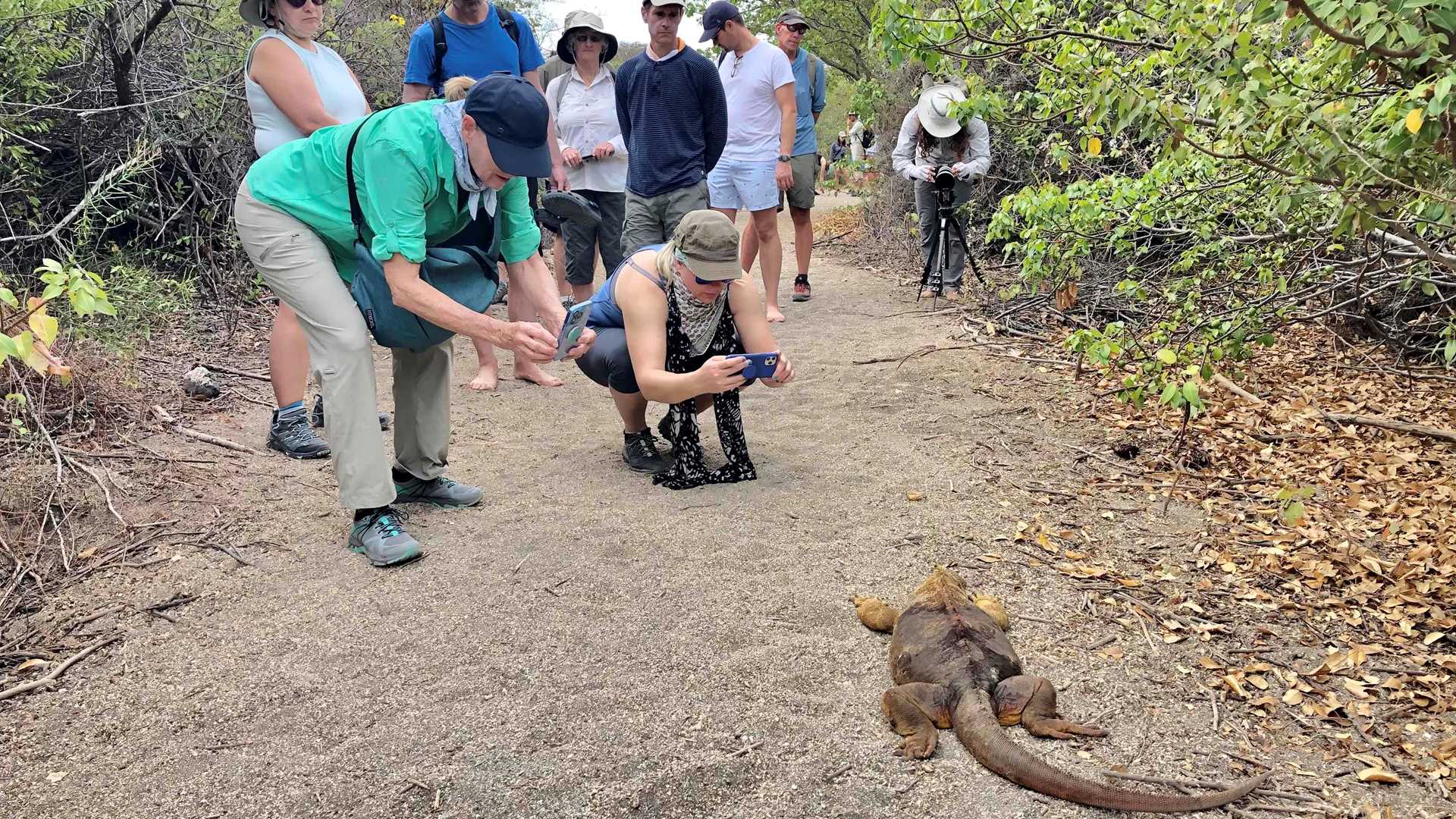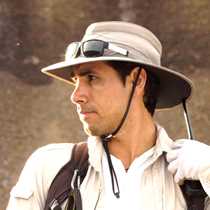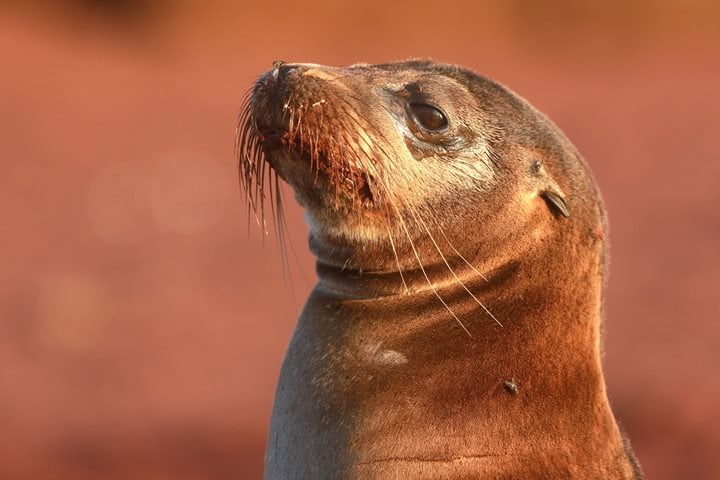National Geographic Islander visited Urbina Bay, located at the navel of the seahorse-shaped island named Isabela. An overcast morning turned clear as soon as we landed on the beach. The hot and sunny weather was perfect to search for reptiles. We observed land iguanas basking right outside of their burrows along the trail. As fate would have it, Mother Nature gave us a beautiful and unusual present: we saw three giant tortoises from Alcedo Volcano, one full grown, after a swim on the beach.
We explored the beautiful Tagus Cove by kayak and paddleboard in the afternoon. Afterward, we went deep water snorkeling. During the afternoon, some of us hiked to Darwin Lake and others took a Zodiac ride. It was another spectacular day in the Galapagos.







